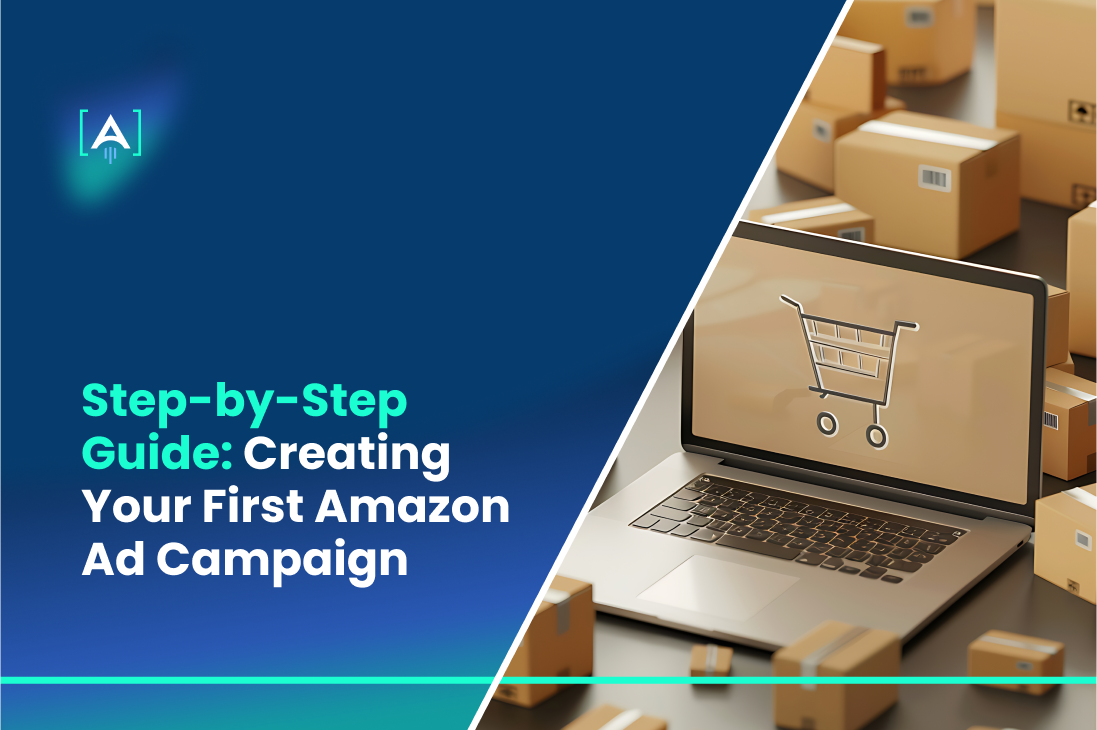You have a fantastic product listed on Amazon. Unfortunately, sales aren’t taking off as you’d hoped.
What to do? Yes, it’s high time to master the power of Amazon advertising.
Statista notes that during the second quarter of 2024, Amazon generated total net sales of nearly 148 billion U.S. dollars, surpassing the 134 billion U.S. dollars in the same quarter of 2023.
Source: Digital Commerce 360
Amazon.com is ranked No.1 in the Top 1000, with over $400 billion in e-commerce sales annually.
One reason for its success is its strategic approach and continuous optimization of advertising efforts. Amazon Ads Agency is instrumental in providing expert guidance, leveraging data-driven strategies, and fine-tuning campaigns to maximize ROI and drive sustained growth for businesses on the Amazon platform.
Thus, if you’re new to e-commerce, understanding how to create Amazon ads is essential for increasing your product visibility and driving sales. Accordingly, this guide will walk you through setting up your very first Amazon ad campaign from scratch.
What Are Amazon Ads?
“What are Amazon Ads?” This is the question of every journey into e-commerce advertising, as understanding the different types of Amazon ads and how they function.
Amazon Ads are a powerful tool for businesses looking to increase their visibility and sales on the Amazon marketplace. With millions of customers searching for products on Amazon daily, strategically placing your products in front of the right audience can significantly boost your brand’s presence and profitability.
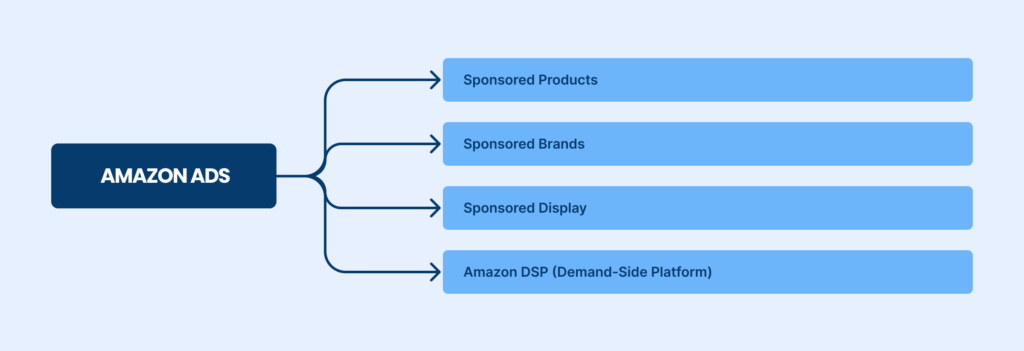
Understanding the different types of Amazon Ads and how they function is essential for any business aiming to maximize its return on investment (ROI) through Amazon’s advertising platform.
Sponsored Products
Sponsored Products are perhaps the most commonly used Amazon Ads.
Sponsored product ads are designed to promote individual product listings and appear in shopping results and product detail pages. When a customer searches for a keyword related to your product, Sponsored Products ads help place your item in a prominent position, increasing its visibility and the likelihood of a sale.
Sponsored Brands
Sponsored Brands (formerly known as Headline Search Ads) are designed to boost brand awareness by prominently featuring your brand logo, a custom headline, and a selection of your products at the top of Amazon search results.
These ads are particularly effective for businesses looking to enhance their brand presence on Amazon and drive traffic to a branded storefront or a specific product collection.
Sponsored Display
Sponsored Display Ads are a type of Amazon advertising that allows you to reach relevant audiences on and off Amazon.
These ads are displayed on product detail pages, customer review pages, and even external websites that are part of Amazon’s advertising network. Sponsored Display is an excellent option for remarketing to customers who have shown interest in your products or similar products but haven’t yet made a purchase.
Amazon DSP (Demand-Side Platform)
Amazon DSP is a more advanced advertising solution that allows brands to buy display and video ads on and off Amazon programmatically.
This platform is ideal for brands that want to expand their reach beyond Amazon’s website, tapping into a broader audience across the web. Amazon DSP provides highly sophisticated targeting options, including demographics, interests, and shopping behaviors, making it a powerful tool for large-scale Amazon marketing campaigns.
Main Steps for Creating Amazon Ads
Step 1: Researching Keywords and Products
Thorough research is crucial before creating your Amazon ad campaigns. The success of your Amazon ads hinges on how well you understand the keywords your potential customers are using and how well you select the products to advertise.
This step is foundational to ensuring that your ad campaigns are effective and efficient in terms of cost.
Importance of Keyword Research
Keyword research is the backbone of any successful Amazon ad campaign.
Whether you are running Sponsored product ads, Sponsored Brands, or any other type of Amazon sponsored ads, understanding the keywords potential customers use to search for products like yours is critical.
- Relevance: Keywords for Amazon ads must be highly relevant to the products you are promoting. When the right keywords trigger your ads, they are shown to a more targeted audience, which increases the likelihood of clicks and conversions.
- Cost Efficiency: Effective keyword research can significantly reduce the cost of your Amazon ads. By identifying and targeting high-performing keywords, you can avoid spending money on clicks that don’t convert. This ensures that your budget is used more effectively, increasing your return on investment (ROI).
- Competitive Edge: The right keyword strategy can help you stand out in a crowded marketplace. By identifying niche or long-tail keywords that your competitors might overlook, you can capture a market segment that is highly interested in your products.
- Ad Placement: Keywords directly influence where your ads will appear on Amazon. Whether you’re aiming for the top of search results or placement on product detail pages, selecting the right keywords determines your ad’s visibility.
Step 2: Choosing the Right Campaign Type
Choosing the right campaign type is a crucial decision in the process of learning how to create Amazon ads. Each campaign type serves a different purpose and can help you achieve specific marketing goals on the Amazon platform.
Whether you aim to increase visibility, boost sales, or build brand awareness, Amazon offers several ad types, including Sponsored Products, Sponsored Brands, and Sponsored Displays.
Sponsored Products
Sponsored Products are the most popular and widely used type of Amazon ads.
How to Create Amazon Ads with Sponsored Products:
- Log into Amazon Seller Central and navigate to the Campaign Manager.
- Select Sponsored Products from the list of available ad types.
- Choose the products you want to advertise from your inventory.
- Set your targeting options, including manual or automatic keyword targeting. Manual targeting lets you choose specific keywords for Amazon ads, while automatic targeting lets Amazon match your ads with relevant customer searches.
- Define your budget and set bids for each keyword or product. The cost of Amazon ads is determined by the amount you bid on each keyword and the term’s competitiveness.
- Launch the campaign and monitor performance through the Campaign Manager.
When to Use Sponsored Products
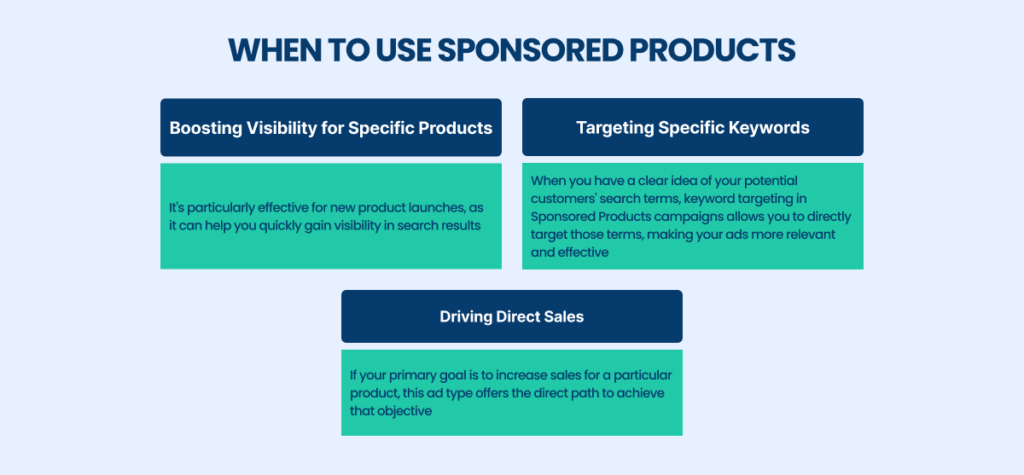
Sponsored Products are the go-to choice for many sellers because they are relatively simple to set up and manage. They offer a straightforward way to increase visibility and sales on Amazon.
Sponsored Brands
Sponsored Brands are a type of Amazon ad that promotes your brand and a selection of your products through a banner ad that appears at the top of search results.
How to Create Amazon Ads with Sponsored Brands:
- Access the Campaign Manager within Seller Central or Vendor Central.
- Select Sponsored Brands as your campaign type.
- Choose your creative format, whether a product collection, store spotlight, or video ad.
- Select the products to feature in your ad, and upload your brand logo and custom headline.
- Define your keyword targeting strategy. Similar to Sponsored Products, you can use manual or automatic keyword targeting.
- Set your budget and bids. Your bid and the competitiveness of the keywords also determine the cost of Amazon ads for sponsored brands.
- Launch the campaign and use the Campaign Manager to monitor and optimize its performance.
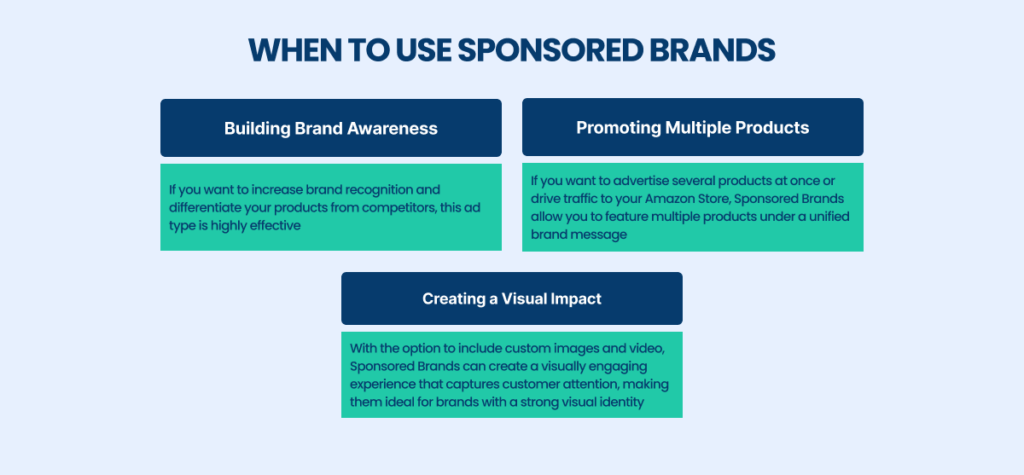
Sponsored Brands are particularly effective for businesses looking to move beyond single-product promotion and build a broader brand narrative on Amazon.
Sponsored Display
Sponsored Display ads are Amazon’s solution for display advertising, allowing you to reach customers both on and off Amazon.
How to Create Amazon Ads with Sponsored Display:
- Go to the Campaign Manager and select Sponsored Display as your campaign type.
- Choose your targeting strategy: Product targeting, which targets specific product categories or individual products, or audience targeting, which targets shoppers based on their interests, shopping behavior, or previous engagement with your brand.
- Customize your ad creatives. Amazon provides the ad templates, but you can customize the headline and call-to-action (CTA).
- Set your budget and bids. Sponsored Display ads are also PPC, so you pay only when someone clicks on your ad.
- Launch your campaign and track its performance using the Campaign Manager.
When to Use Sponsored Display
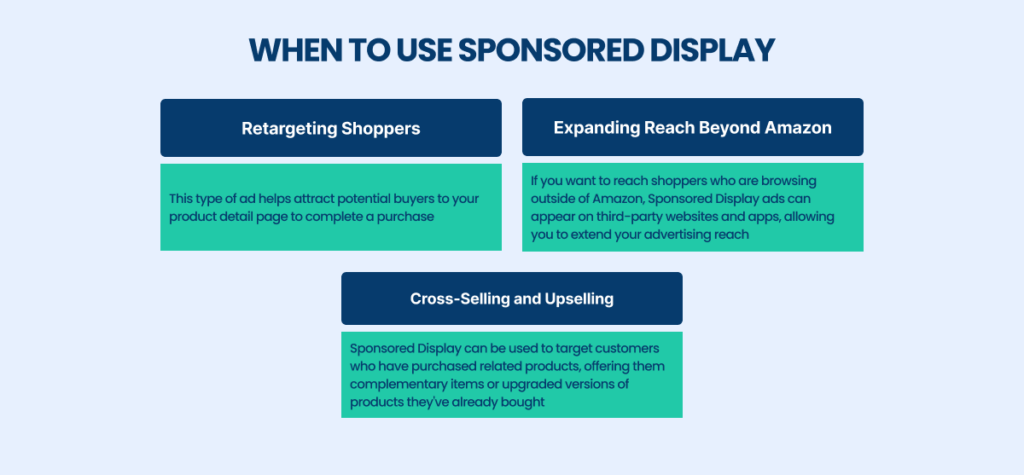
Sponsored Display ads are a powerful tool for re-engaging potential customers and expanding your advertising reach beyond the Amazon platform.
Choosing the Right Campaign Type for Your Business
Selecting the appropriate Amazon ad campaign type depends on your business goals, target audience, and product strategy. Each ad type—Sponsored Products, Sponsored Brands, or Sponsored Display—offers unique benefits and serves different purposes within your overall marketing plan. According to the Hellium10, most Amazon sellers generate at least $1,000 per month in sales.
- For Direct Sales, Sponsored Products are the best choice for driving immediate sales and increasing visibility for specific products. If you know the keywords your customers are using, keyword targeting in Sponsored Products campaigns will allow you to reach them effectively.
- For Brand Building: If you’re looking to strengthen your brand presence on Amazon, Sponsored Brands will help you achieve that goal. These ads are perfect for businesses that want to promote multiple products under a cohesive brand message and capture attention with custom creatives.
- For Retargeting and Expanding Reach: Sponsored Display is ideal for businesses that want to re-engage customers interested in their products and those looking to extend their advertising reach beyond Amazon. This campaign type is also great for cross-selling and upselling strategies.
By understanding what each campaign type offers and when to use them, you can make informed decisions that align with your business objectives.
Effective Amazon ads management involves setting up ads and strategically choosing the right types of campaigns to maximize your return on investment and achieve sustainable growth on the Amazon platform.
Step 3: Setting Your Campaign Budget and Bids
Once you’ve chosen the right campaign type for your Amazon ads, setting your campaign budget and bids is the next crucial step. This step is pivotal in determining how effectively your ads will perform and how well you can control your costs.
Whether you’re working with Sponsored Products, Amazon DSP ads, or Amazon video ads, understanding how to allocate your budget and set appropriate bids is key to maximizing your return on investment (ROI).
Understanding Budget Allocation
Understanding how to allocate your budget effectively is the first step in managing Amazon ads costs. Budget allocation involves deciding how much money you will spend on your Amazon ads over a specific period.
This budget drives the visibility of your ads, determining how often they are shown to potential customers. Setting a budget starts with defining your overall advertising goals.
For example, suppose you’re launching a new product and want to gain maximum exposure quickly. In that case, you might allocate a larger budget to ensure your ads are shown frequently and in prominent placements.
When considering how to create Amazon ads, it’s important to remember that budget allocation isn’t just about setting a total amount.
You must also decide how to distribute this budget across various ad groups within your campaign. Each ad group can target different keywords, products, or audiences, and how you allocate your budget across these groups can significantly impact the performance of your campaign. For instance, if one ad group is focused on high-performing keywords that drive substantial traffic, you might allocate more budget to that group to capitalize on its success.
Setting Daily Budgets
Setting daily budgets is critical to controlling ad spending and ensuring that a campaign runs smoothly over its intended duration.
A daily budget is the maximum amount you are willing to spend on your ads each day. This helps to evenly distribute your budget over time, preventing it from being exhausted too quickly and ensuring that your ads remain active throughout the campaign period.
Step 4: Creating Ad Copy and Selecting Creative
After setting your campaign budget and bids, the next crucial step in learning how to create Amazon ads is crafting compelling ad copy and selecting creative assets that will capture the attention of potential customers.
Source: Amazon
The ad copy and creative elements you choose play a significant role in how effectively your ads communicate with your audience and drive them to take action, whether that’s clicking on your ad or making a purchase.
Well-designed creatives and thoughtfully written ad copy can make your Amazon ads stand out in a crowded marketplace.
Designing Creative Assets
Alongside your ad copy, the creative assets you choose—such as images, videos, and other visual elements—are vital to the success of your Amazon ad campaigns.
The right visuals can attract attention, convey your brand’s message, and persuade customers to click on your ad.
- High-Quality Images:
Images are one of the most critical components of your Amazon ads. Ensure that the images you use are high-resolution and professionally shot.
Blurry or poorly lit images can diminish the perceived quality of your product and deter potential customers. Aim to use images that showcase your product’s features and benefits.
- Showcase the Product in Use:
Where possible, include images or videos of the product in use. This will help potential customers understand how the product works and allow them to envision how it might fit into their lives.
For example, if you’re advertising a kitchen gadget, showing it in action in a kitchen setting can be much more effective than a simple product shot.
- Consistency with Brand Identity:
Your creative assets should be consistent with your overall brand identity. This includes using colors, fonts, and design elements that align with your brand’s style. Consistency in your creative assets helps build brand recognition and trust among customers.
- Leverage Amazon Video Ads:
Video ads can be a powerful tool in your Amazon advertising strategy. They allow you to convey more information about your product in a short amount of time and tend to be more engaging than static images.
When creating Amazon video ads, focus on clarity, brevity, and a strong opening. The first few seconds capture the viewer’s attention, so ensure they immediately convey the key message.
- Use Infographics for Clarity:
Infographics can be particularly effective for complex products with multiple features or benefits. These visuals can break down product specifications in an easy-to-digest format, helping customers quickly understand what your product offers.
Infographics should be well-designed, with clear, concise text and visuals complementing the message.
- Optimizing for Mobile:
Many Amazon shoppers use mobile devices, so your creative assets must be optimized for mobile viewing. Ensure that images are clear and text is legible on smaller screens.
Consider the vertical format for video ads, which works better on mobile devices. Testing your creatives on different devices before launching the campaign can help you avoid issues and ensure your ads look great on all platforms.
- A/B Testing Creative Variations:
Like ad copy, A/B testing your creative assets can provide valuable insights into what works best with your audience.
Test different images, video lengths, or layouts to see which variations drive the most engagement and conversions. This data can then be used to refine your creative strategy over time.
- Adherence to Amazon’s Guidelines:
Finally, always ensure your creative assets adhere to Amazon’s advertising guidelines.
This includes avoiding prohibited content, such as exaggerated claims or inappropriate imagery, and ensuring your ads comply with Amazon’s technical specifications for size, format, and file type.
Step 5: Launching Your Campaign
Launching your Amazon ad campaign is an exciting step that combines all your hard work in research, strategy, and preparation.
At this stage, it’s crucial to ensure that everything is set up correctly to maximize the effectiveness of your campaign. This includes finalizing all your campaign settings, reviewing your setup to catch any potential issues, and then confidently launching your campaign.
Finalizing Campaign Settings
Finalizing all your campaign settings is essential before launching your campaign. This is the stage where you double-check all the details and ensure everything is aligned with your advertising goals.
- Budget Allocation: Ensure that your daily and overall budget allocations are set appropriately based on your goals and the expected competition. Your budget should be sufficient to keep your ads running throughout the day without exhausting your funds too early.
- Bidding Strategy: Review your bidding strategy to ensure it aligns with your objectives. For example, if your goal is to maximize visibility, you might opt for aggressive bidding. On the other hand, if you’re focused on controlling costs, a more conservative bidding approach might be appropriate.
- Ad Group Organization: Check that your ad groups are logically organized, with each group targeting specific products, keywords, or audiences. A well-structured ad group setup can improve the efficiency of your campaign and make it easier to manage and optimize over time.
- Targeting Options: Confirm that your keyword, product, or audience targeting is correctly set up. This includes ensuring you’ve selected the right match types for your keywords (broad, phrase, or exact match) and that your product or audience targeting is precise.
- Ad Creatives and Copy: Review your prepared ad copy and creative assets. Ensure that they are engaging, aligned with your brand, and error-free. Previewing how your ads will look to potential customers is also a good idea.
- Campaign Duration and Schedule: Set the duration of your campaign and any specific scheduling options. If you’re targeting a particular time frame (such as a holiday or promotion), ensure your ads are scheduled to run during the most relevant times.
- Amazon Ads Guidelines Compliance: Ensure that your ads comply with Amazon’s advertising guidelines. This includes adhering to content policies, image and video specifications, and legal requirements.
Partner with [A] Growth Agency For Your Amazon Ad Campaign
Creating your first Amazon ad campaign can seem daunting, but by following a structured, step-by-step approach, you can successfully navigate the process and set yourself up for success on the platform.
[A] Growth Agency will move you forward, offering valuable insights, advanced tools, and expert management to help you optimize your campaigns and achieve higher returns on investment.
Our team specializes in turning entrepreneurial dreams into reality with effective, tailored growth strategies. Moreover, our core mission is to scale businesses and implement effective growth strategies. We believe in the power of data-driven approaches to transform businesses.
Don’t hesitate!
